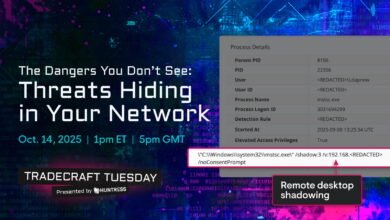Topic: phishing attack
-

Inside the PureRAT Attack: From Info Stealer to Full Control
A sophisticated cyberattack begins with phishing emails using sideloading techniques to deploy malware, escalating from credential theft to deploying the full-featured PureRAT remote access trojan for complete system control. The campaign employs multiple layers of obfuscation, including custom c...
Read More » -

Fake npm 2FA Reset Email Used to Hijack Popular Code Packages
A phishing campaign compromised at least 18 widely used JavaScript npm packages, injecting malicious code to hijack cryptocurrency transactions and highlighting supply chain vulnerabilities. The attack began when a developer fell for a convincing phishing email, allowing the threat actor to take ...
Read More » -

Russian Hackers Bypass Two-Factor Authentication in New Attack
Russian hackers bypassed two-factor authentication (2FA) using social engineering, exploiting legitimate account features like Gmail's "app password" to target high-profile individuals. A British researcher, Keir Giles, was tricked by hackers posing as U.S. officials, who used forged documents an...
Read More » -

FileFix Attack Evades Security with Cache Smuggling
A new FileFix social engineering attack uses cache smuggling to deliver malware undetected by disguising itself as a Fortinet VPN Compliance Checker and tricking users into executing hidden PowerShell commands. The attack involves copying a text string that secretly contains a script to search br...
Read More » -

NPM Supply-Chain Attack Thwarted: Hackers Foiled
A massive supply-chain attack on the NPM ecosystem was quickly neutralized, preventing a catastrophic security incident despite malicious updates reaching 10% of cloud environments. The attack began with a phishing compromise of a maintainer account, allowing tainted updates to widely used packag...
Read More » -

Popular NPM 'is' Package Infects 2.8M Weekly Users with Malware
A widely-used NPM package called 'is' was compromised in a supply chain attack, distributing malware-infected versions (3.3.1 to 5.0.0) with a backdoor enabling remote code execution. Attackers used phishing via a fake npmjs.com domain to hijack maintainer accounts, pushing malicious updates to m...
Read More »





